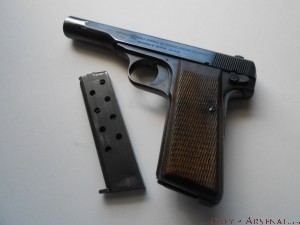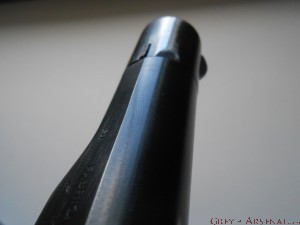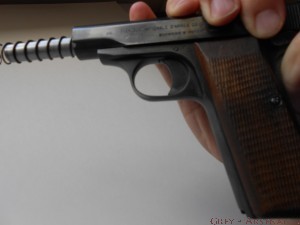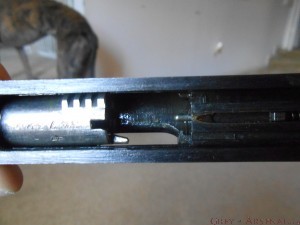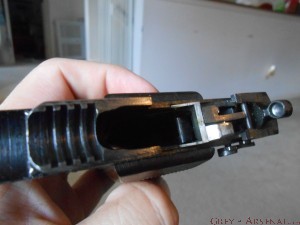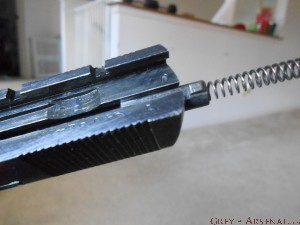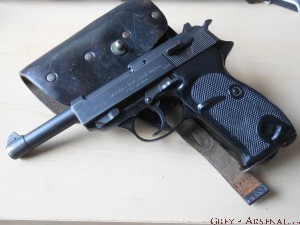 Lets move on last week’s post in France to wartime Germany where we’ll be getting intimate with the Walther P38, and it’s post-war relative, the P1. First produced in 1939 by Walther Arms to serve as the service pistol of the Wehrmacht, the P38 is a first-of-it’s-kind locked-breech semi-automatic pistol with a DA/SA trigger. This is also the earliest handgun I’m aware of which includes a Loaded Chamber Indicator (in this case, above the hammer). More on that later.
Lets move on last week’s post in France to wartime Germany where we’ll be getting intimate with the Walther P38, and it’s post-war relative, the P1. First produced in 1939 by Walther Arms to serve as the service pistol of the Wehrmacht, the P38 is a first-of-it’s-kind locked-breech semi-automatic pistol with a DA/SA trigger. This is also the earliest handgun I’m aware of which includes a Loaded Chamber Indicator (in this case, above the hammer). More on that later.
Chambered in 9mm Luger similar to their previously used P08 Luger, this was a more powerful handgun than the other Walther issued to the Wehrmacht, the PP/PPK. The original wartime P38s were produced from 1938 to war’s end in 1945. 17 years passed before the Bundeswehr announced that they would be adopting the P38 as their service pistol, and in June of 1957 production of the P38 recommenced. These were produced until 1963, when an updated design was adopted, referred to as the P1, which was finally phased out completely in 2004, replaced by the HK P8/USP.
The major difference between the earlier P38 and the P1 variant is construction of the frame, which was switched to Aluminum in the P1. As is visible, the grip design also changed from grooved to checkered.
The top example is a wartime P38, and the bottom is a P1 produced in late 1968.
They’re still considered to be great shooters, and while not having the greatest DA trigger pull in the world, their SA trigger pull is extremely crisp, and has the shortest reset I’ve personally experienced. They’re well balanced, and even the aluminum framed P1 has very comfortable recoil.
Right, onto the tear down-
- Remove the magazine via the bottom magazine release, and open action to ensure that the firearm is unloaded.
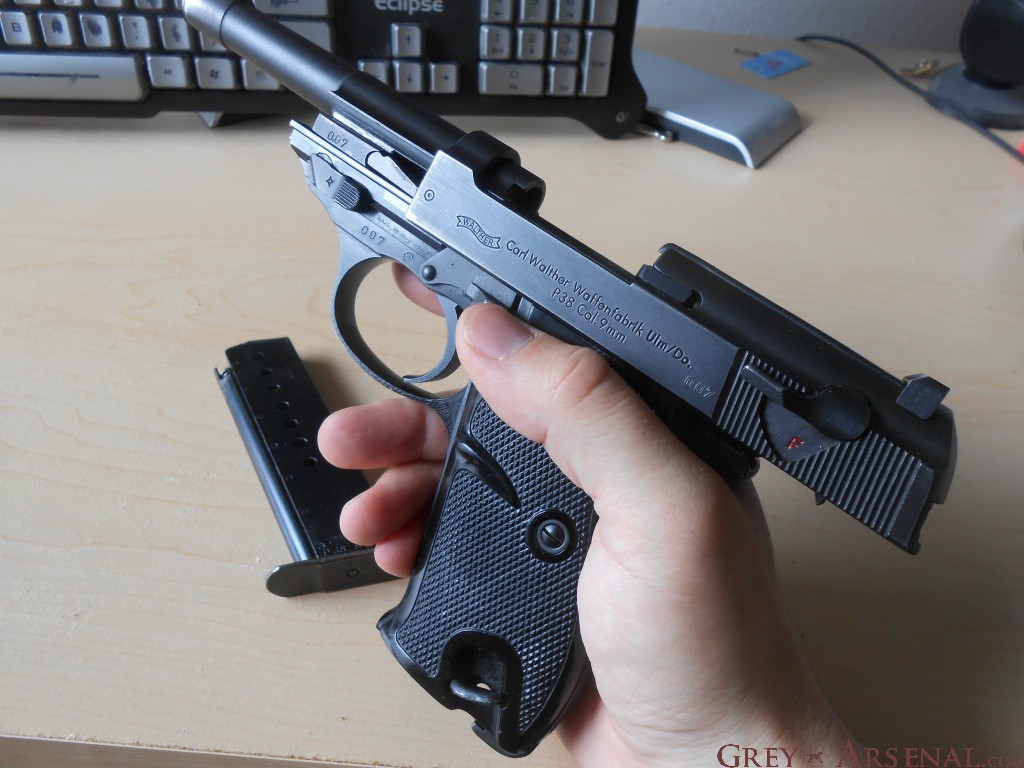
- Swing the slide release located on the front left of the frame down and forward, noting how it aligns to allow the slide move forward and off the frame.
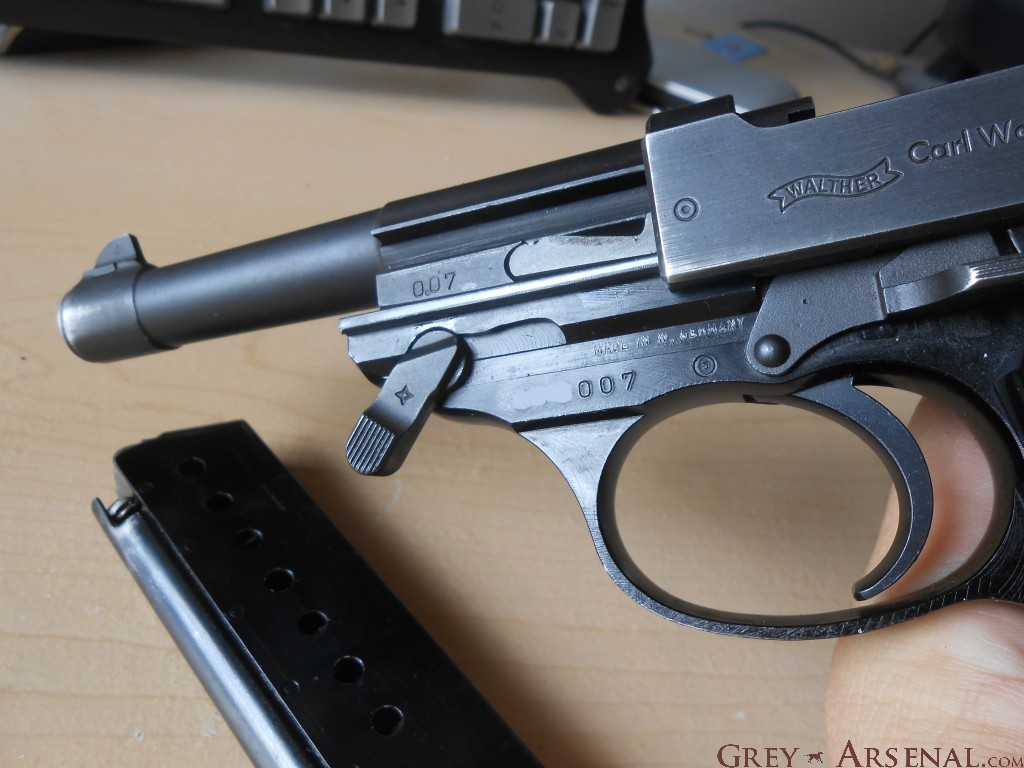
- Disengage the slide lock if necessary, and move the slide forward only to the point where it would normally rest. At this point, de-cock the hammer to allow the slide to be fully removed from the frame. The de-cocking lever may be used carefully, but it’s preferable to just lower the hammer gently while using the trigger.
- To remove the barrel from the slide, simply push the “button” (locking block operating pin) visible at the rear of the barrel assembly, which will push the locking-block wedge out a bit, allowing the barrel assembly to be withdrawn from the front of the slide.

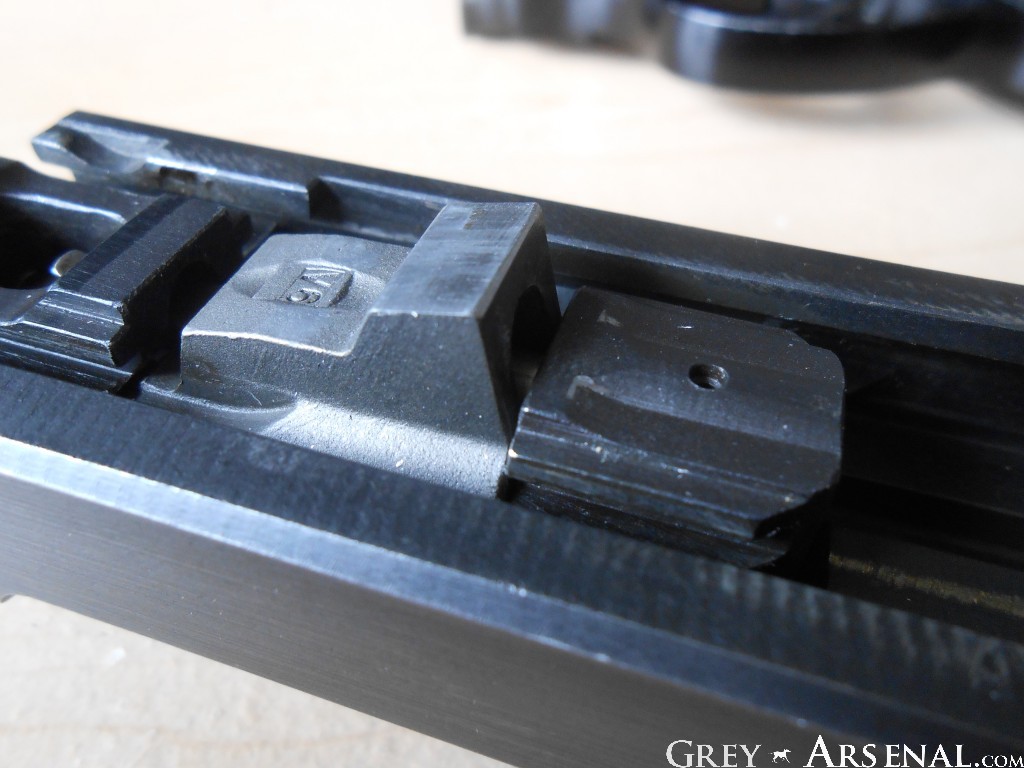
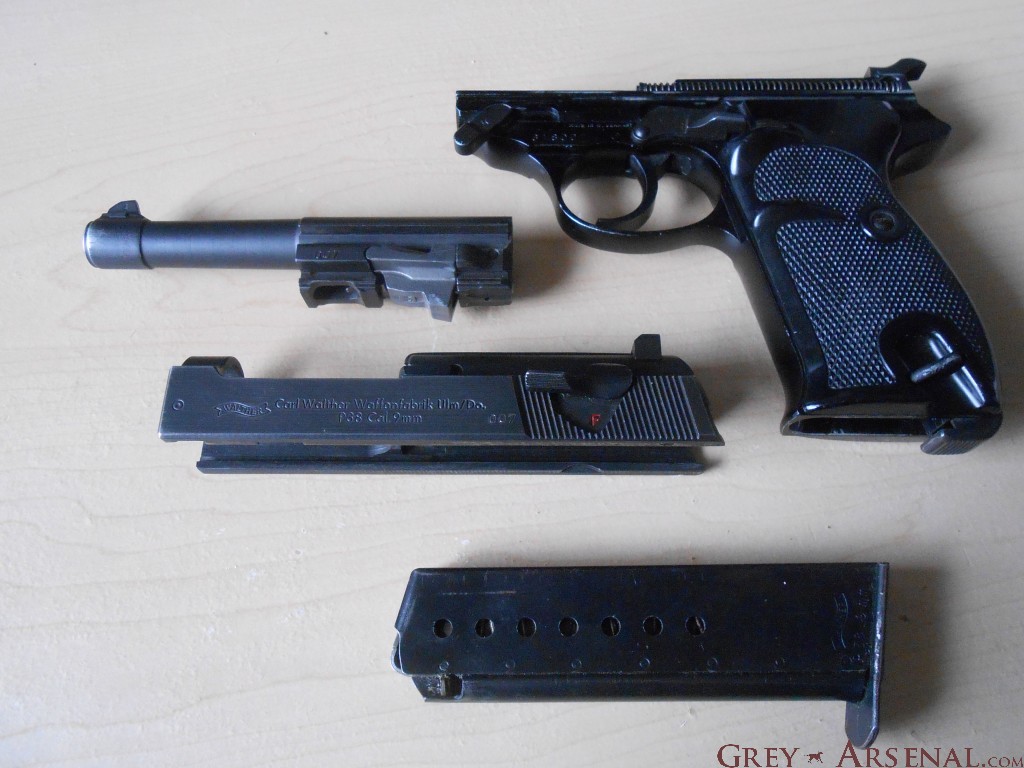
- At this point, you have access to everything you need for a decent simple clean ‘n lube. Notice the unique dual recoil springs on either side of the frame. These can be removed, if desired, by either using a small tool to pull the spring back away from the contained rod at the front far enough that you can remove the rod, then withdrawing the spring OR using a tool to push the spring forward a bit from the rear until it can be extracted from the wider area at the rear. I prefer the first method, but didn’t bother showing it, as it’s rarely necessary, and pretty easy to figure out.
- One thing I would check out while you have it apart, however, is the Trigger Bar and Sear are interacting correctly. To get access to this, use a small flat-head screwdriver to remove the Grip Screw from the left side of the firearm. Remove the right side grip panel first, then maneuver and remove the left side panel, taking care not to damage it on the slide release.

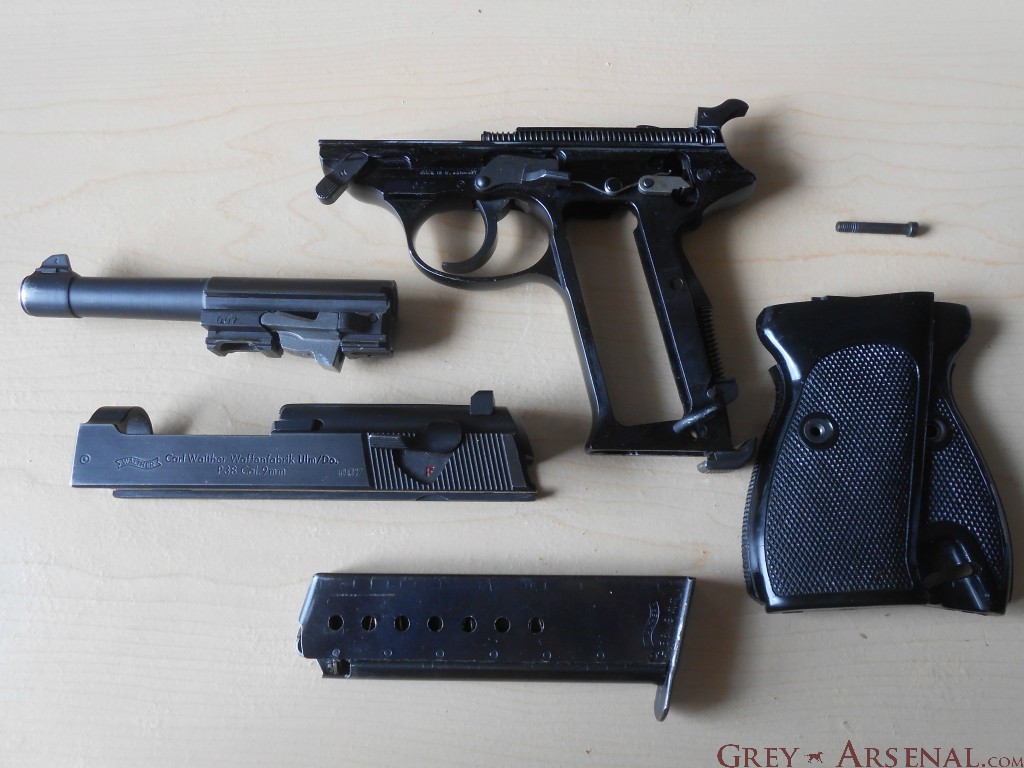
- What you’re looking for is on the right side of the frame, previously covered by the right grip panel.
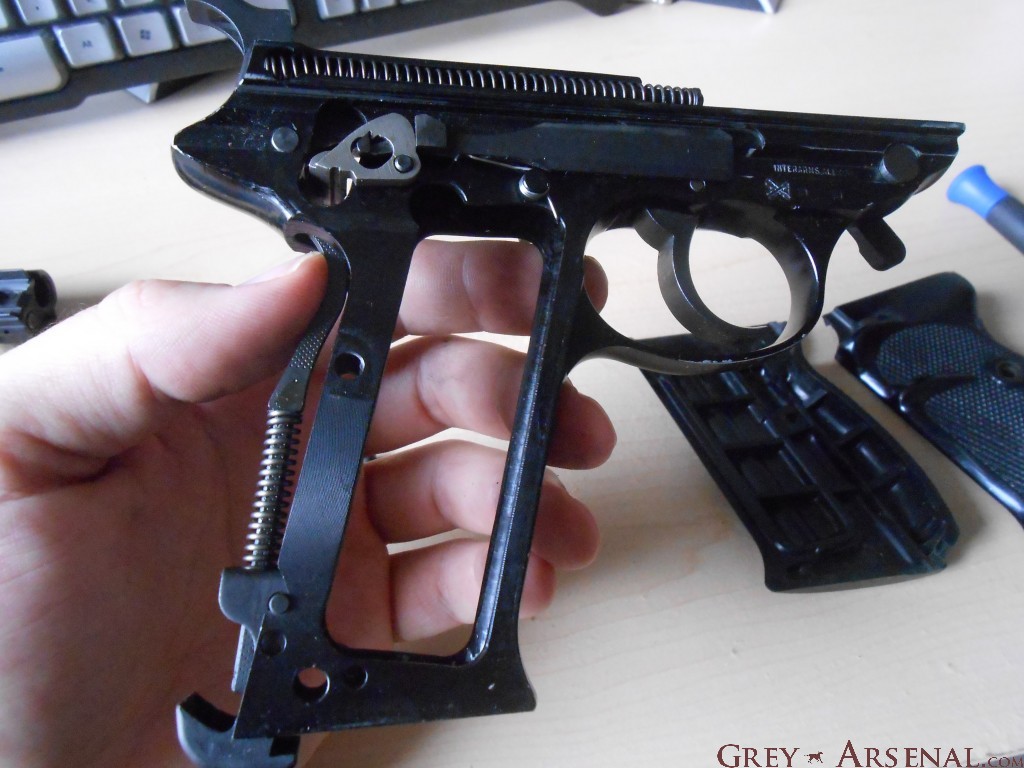
- The grey part with the hole there is the Sear. A problem I’ve seen develop with the P38 is the Trigger Bar spring coming loose, and not forcing the “duck bill” hook of the Trigger Bar from interacting with the corresponding notch in the Sear when pulling the trigger. This can lead to a dangerous situation where you pull the trigger, no bang happens, and the weapon is now Condition 0, and has a malfunctioning trigger, a VERY dangerous situation. A weak/worn spring can also cause this. To check, be sure the spring is where it should be, then cock the hammer, and slowly pull the trigger (lowering the hammer with your thumb) to watch the action of the trigger bar on the Sear. Watch out for this:

- If, when you pull the trigger, the Trigger Bar hook doesn’t positively catch the notch in the Sear, you have a problem, and should find a replacement Trigger Bar Spring.
Reassemble in reverse order, making note to insert the barrel assembly into the slide with the locking-block pushed out (that is, button pushed in so the locking-block is lowered), and when replacing the slide to the frame, make sure to push the locking-block back up so that it’s able to stay with the slide when you retract it far enough to re-engage the slide release.
Oh, one more thing to share! The Loaded Chamber Indicator I’d mentioned. Pretty interesting really:
Note the protruding post at the top of the breech face? When a round is chambered, that rod is pushed back against a weak spring, and out of a small hole above the hammer on the rear of the slide, making this visible:
There are slight differences between the P38 and P1 in the design of the “Cartridge Indicator Pin” channel (as evidenced below), but it works the same way on both.
Next week, I think we’ll get back to a more familiar end of the 20th Century.
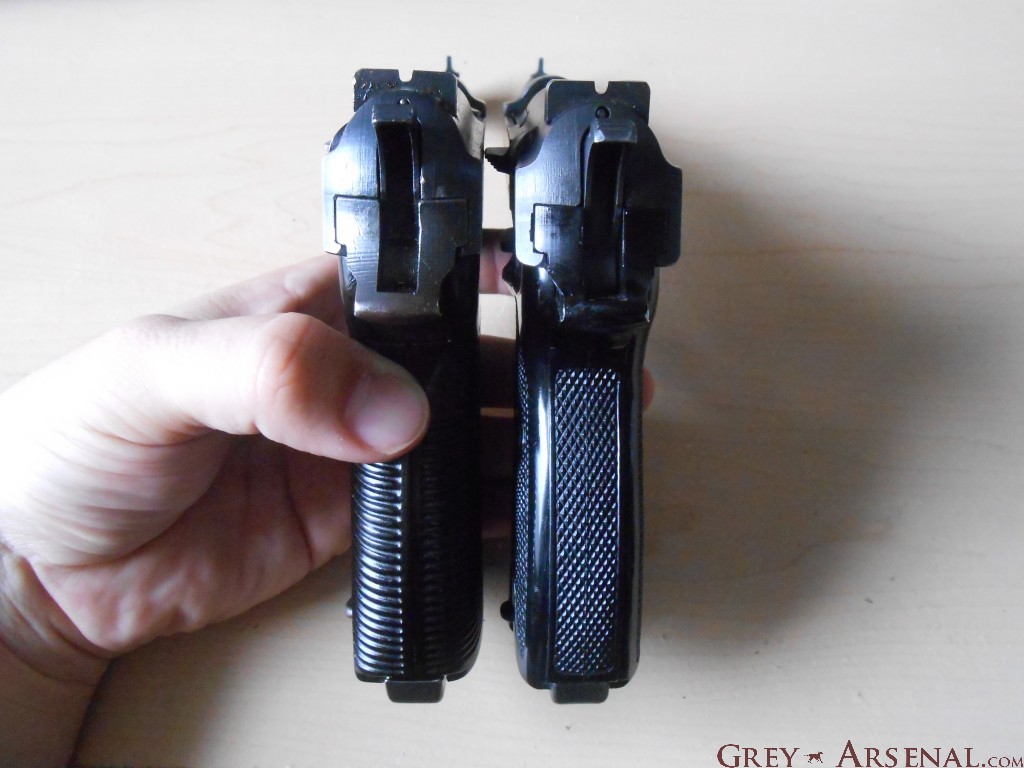




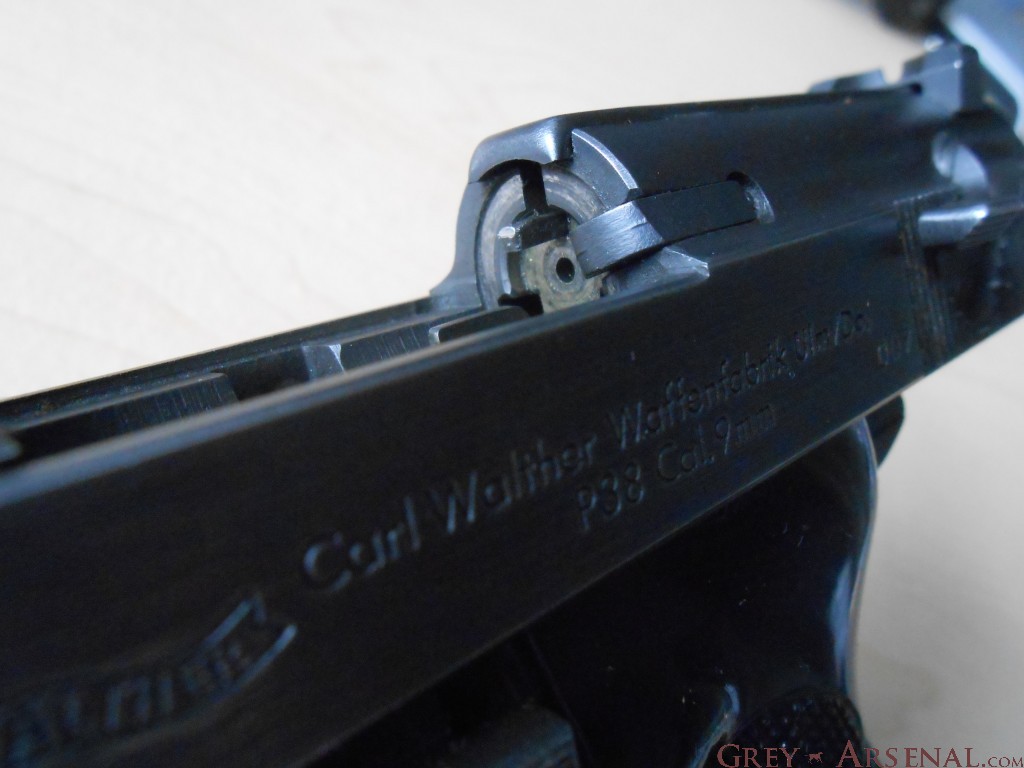
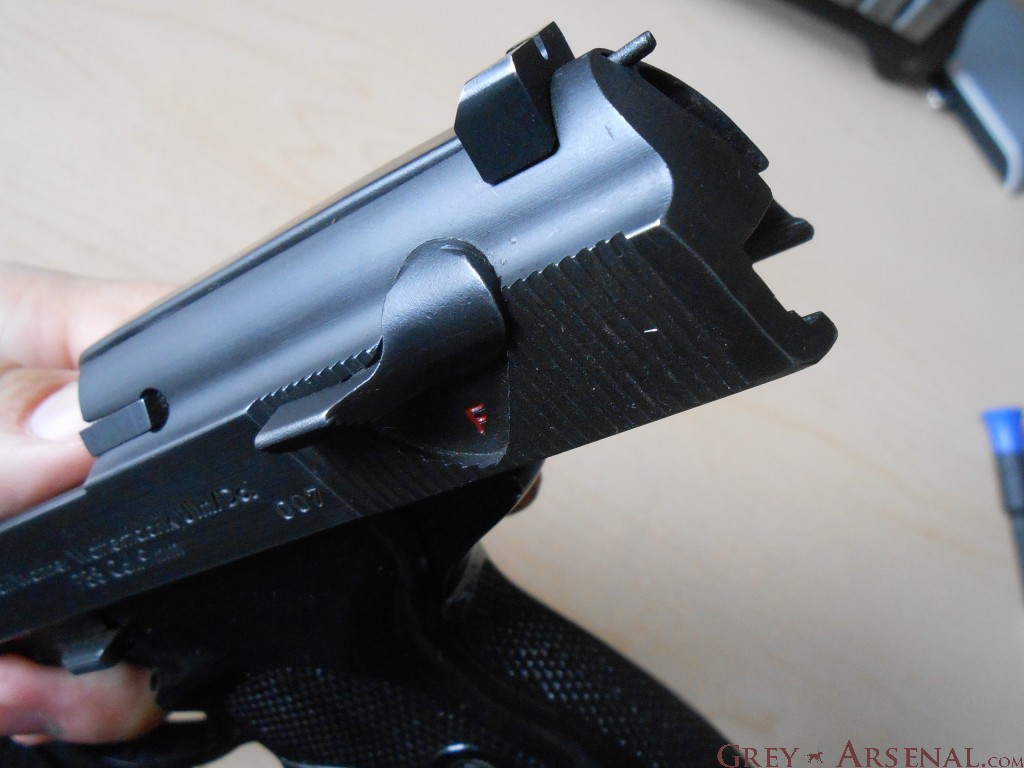




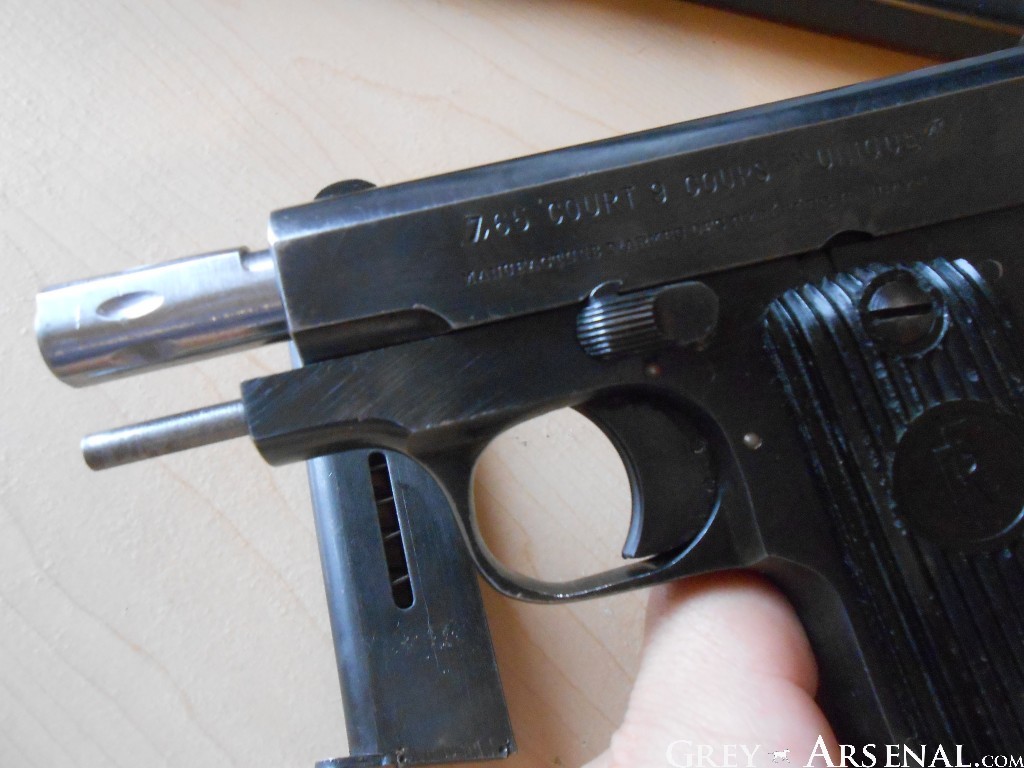

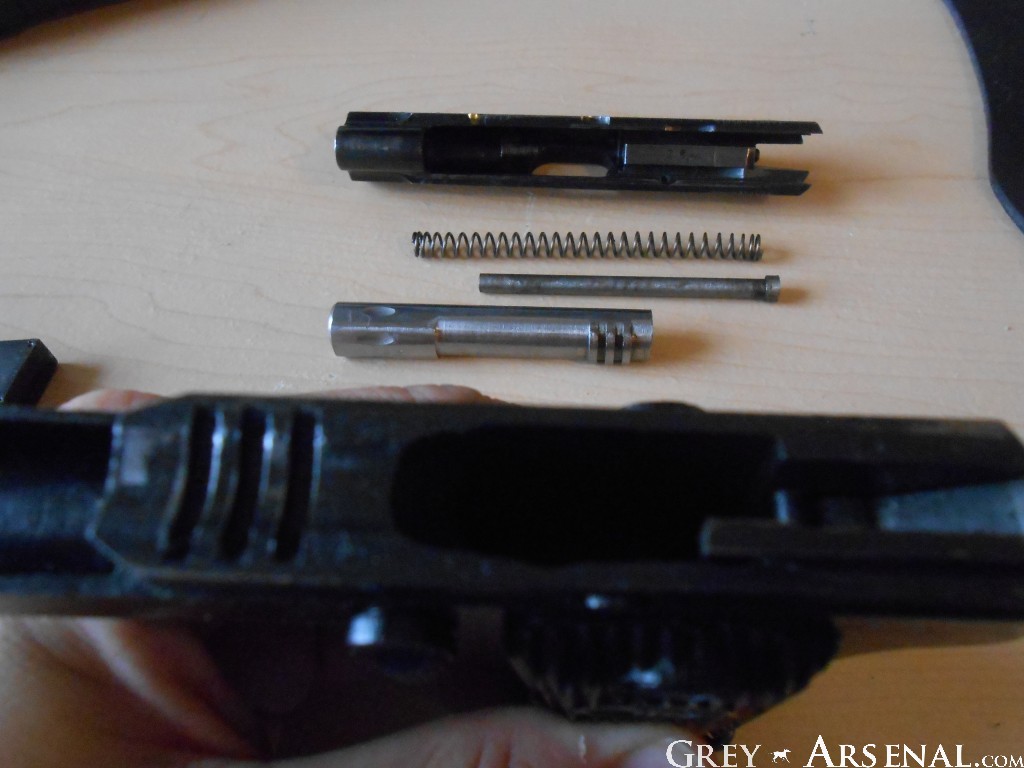

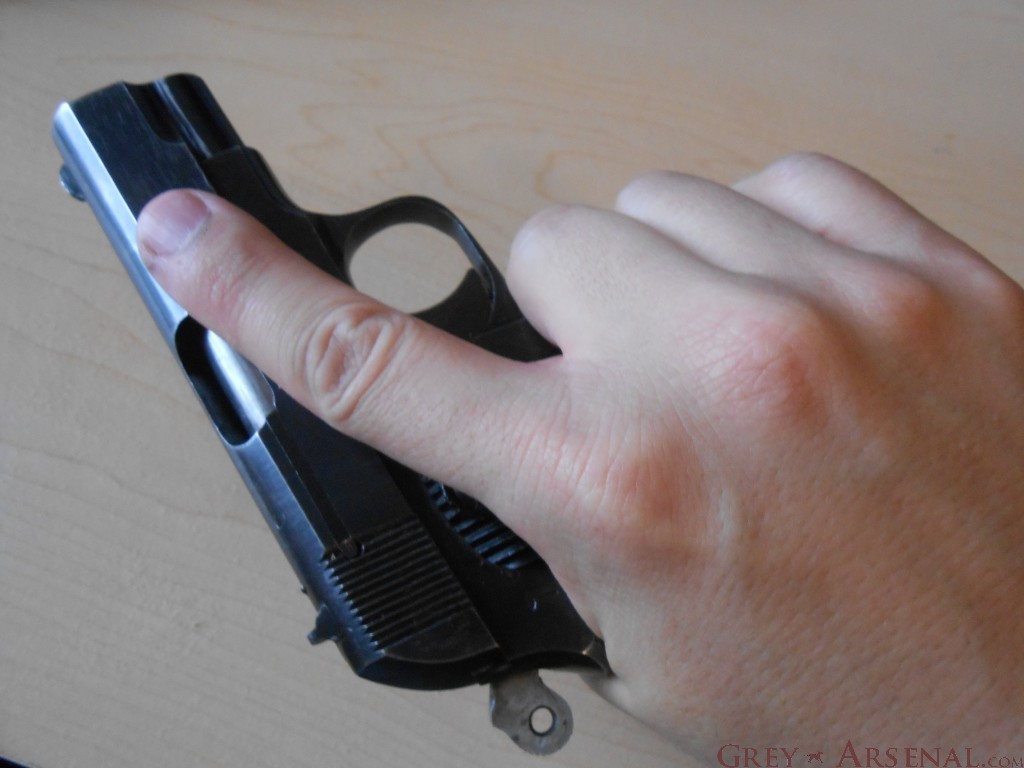
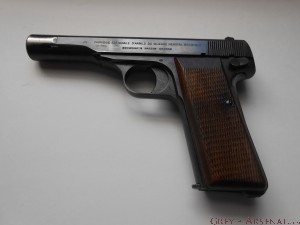

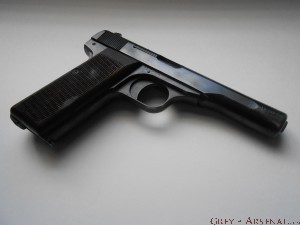 Anyhow, in 1922, some modifications to the design were made, lengthening the barrel, slide, and handgrip, lending to increased accuracy and an additional 2 rounds in magazine capacity. This was done for the purpose of military contracts. Sadly, the military they’re most associated with would be the German army, as they were produced by the Nazis after Belgium was occupied.
Anyhow, in 1922, some modifications to the design were made, lengthening the barrel, slide, and handgrip, lending to increased accuracy and an additional 2 rounds in magazine capacity. This was done for the purpose of military contracts. Sadly, the military they’re most associated with would be the German army, as they were produced by the Nazis after Belgium was occupied.